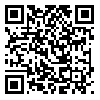Volume 3, Issue 3 (9-2013)
2013, 3(3): 409-429 |
Back to browse issues page
Download citation:
BibTeX | RIS | EndNote | Medlars | ProCite | Reference Manager | RefWorks
Send citation to:



BibTeX | RIS | EndNote | Medlars | ProCite | Reference Manager | RefWorks
Send citation to:
Farshidianfar A, Soheili S. OPTIMIZATION OF TMD PARAMETERS FOR EARTHQUAKE VIBRATIONS OF TALL BUILDINGS INCLUDING SOIL STRUCTURE INTERACTION. International Journal of Optimization in Civil Engineering 2013; 3 (3) :409-429
URL: http://ijoce.iust.ac.ir/article-1-141-en.html
URL: http://ijoce.iust.ac.ir/article-1-141-en.html
Abstract: (23490 Views)
This paper investigates the optimized parameters of Tuned Mass Dampers (TMDs) for high-rise structures considering Soil Structure Interaction (SSI) effects. Three optimization methods, namely the ant colony optimization (ACO) technique together with artificial bee colony (ABC) and shuffled complex evolution (SCE) methods are utilized for the optimization of TMD Mass, damping coefficient and spring stiffness as the design variables. The objective is to decrease the maximum displacement of structure. The 40 story structure with three soil types is employed to design TMD for six types of far field earthquakes. The results are then utilized to obtain relations for the optimized TMD parameters with SSI effects. The relations are then applied to design TMD for the same structure with another five types of far field oscillations, and reasonable results are achieved. For further investigations, the obtained relations are utilized to design TMD for a new structure, and the reduction values are obtained for five types of earthquakes, which show acceptable results. This study improves the understanding of earthquake oscillations, and helps the designers to achieve the optimized TMD for high-rise buildings.
Keywords: tuned mass damper (TMD), soil-structure interaction (SSI), ant colony optimization (ACO), artificial bee colony (ABC), shuffled complex evolution (SCE), curve fitting
Type of Study: Research |
Subject:
Optimal design
Received: 2013/07/20 | Accepted: 2013/07/29 | Published: 2013/07/29
Received: 2013/07/20 | Accepted: 2013/07/29 | Published: 2013/07/29
| Rights and permissions | |
 | This work is licensed under a Creative Commons Attribution-NonCommercial 4.0 International License. |





